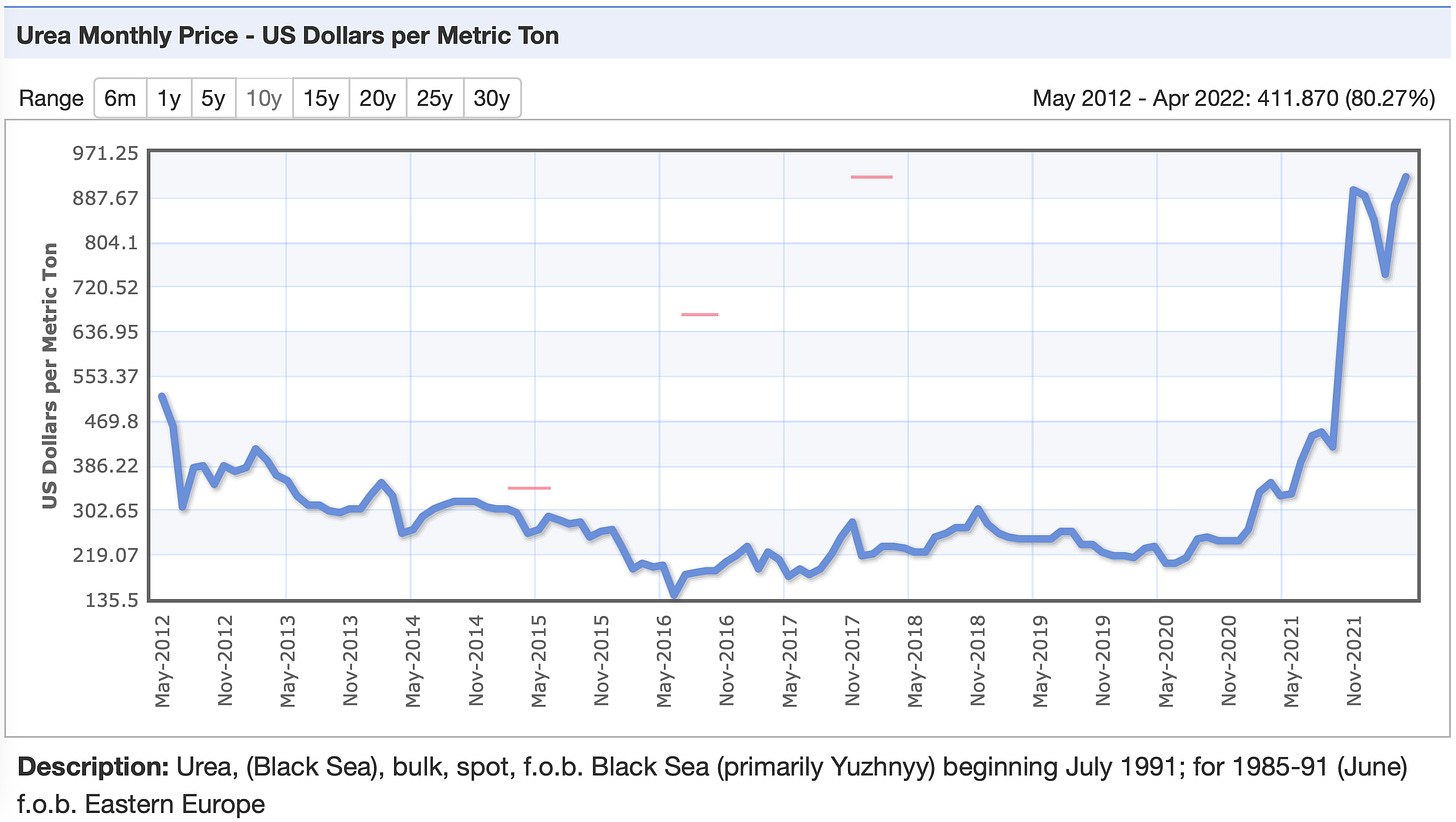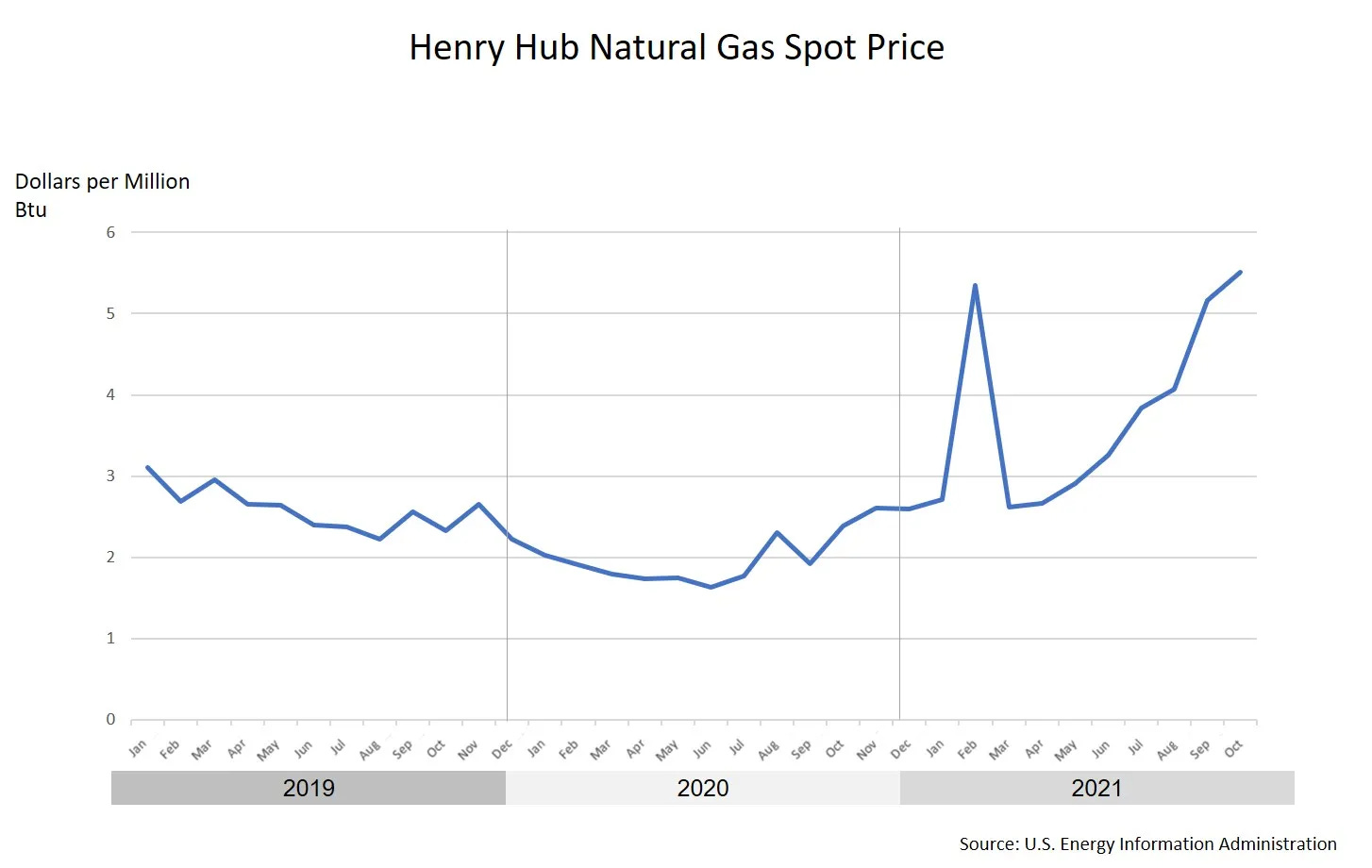The Unsuspecting Destruction Of The Supply Chain
How Diesel Exhaust Fluid (DEF) is leading to a shortage & skyrocketing prices, crippling transportation
Looks like an unsuspecting Diesel Exhaust Fluid (DEF) could upend all the other possible reasons for a societal breakdown, hitting us upside the head while we have all been distracted watching rising diesel and gas prices. Most Americans are not paying attention to the absolutely necessary diesel exhaust fluid required to keep the diesel-engine economy of America moving along.
DEF may very well be the big white elephant in the room nobody is even aware of. We are amidst a DEF shortage and skyrocketing prices, and most Americans have never heard of it unless they’re operating heavy-duty vehicles. Coastal areas are more hard-hit than the midwest.
A DEF mixture is typically 2/3 deionized water and 1/3 urea and is regulated by the American Petroleum Institute. DEF is urea or otherwise known as aqueous ammonia, a byproduct of industrial ammonia production. While urea is derived from one of the byproducts of urine, it’s synthetically made for the purpose of DEF, so cows and other ranch animals aren’t needed for this product.
Last September, urea prices were trading at $600/ton. Prices continued climbing through the year to just over 900/ton today – more than 3 times higher than normal rates.
Since 2010 the U.S Environmental Protection Agency (EPA) began requiring modern diesel engines to inject DEF into the exhaust stream to reduce their production of (NOx) nitrogen oxides in order to meet current EPA exhaust emissions standards. Since then vehicle manufacturers have been putting safety measures into all diesel-run vehicles. In fact, diesel engines flat-out can’t operate and will turn your dashboard into an Amber-style alert before completely shutting down your vehicle when DEF levels get too low.
So what is dependent upon DEF? Newer vehicles such as semi-trucks, heavy-duty pickup trucks, fire engines, ambulances, tractors, RVs, and aviation including air tankers and water bombers — pretty much everything our society is dependent upon. In addition, urea is used for the production of plastics, glues, explosive components, animal feedstock, and many other commercial products. I can’t help but wonder if EPA leaders ever thought they were creating an unintended and dangerous linchpin to society.
The breakdown in the supply of DEF is being blamed on everything from Putin to Ukraine, to reduced production in China and Europe, the rise of natural gas prices, demand outpacing supply, and competition to make fertilizers. Due to the unprecedented increase in natural gas prices in Europe, a number of urea plants have slowed or stopped the production of DEF. But fingers are also pointing at ongoing supply chain issues affecting the availability of rail cars to transport DEF, specifically in the Western states. No matter the reason, serious interruptions are going to only compound the already stressed supply chain and food production network that has seen an unprecedented string of food distribution and processing centers burn to the ground across the country. One can’t help but wonder if all of this isn’t simply a coincidence or if something more sinister may be afoot.
Yes, if you run out of DEF and are in a pinch, you can substitute windshield fluid so you can keep your engine running and get yourself to an auto store. Hopefully, the store will have it in supply, however, if you ruin your engine with the windshield fluid, this will nullify your warranty. But ultimately, between the shortage and skyrocketing price of DEF and exorbitant diesel fuels, many truckers are parking their trucks and hanging up their keys. The cost is too high and the risk too great to do business.
So, what to do? Well, this is not new news to diesel engine operators. They are some of the folks sounding the alarm. But if you are the average Joe, you better be stocking up on important food and supplies, NOW.
The other important action item? If I were you, I would conduct a SWOT analysis on yourself, your family, and your circle of friends to better identify your Strengths, Weaknesses, Opportunities, and Threats (SWOT). This is a really productive way to identify what you need to prioritize in your life for any upcoming hard times or supply shortages. I will be writing in more detail about how to conduct a SWOT analysis shortly. It makes preparing for difficult times less daunting and keeps you on track in preparing for the unexpected.
I have been saying this since the beginning of Covid: We will be forced from being a consumer society (for generations now) into becoming a society of producers. We are going to have to learn to produce more at the local and regional levels and be less dependent upon getting products from great distances. This is simply the reality for now.
To counter the breakdown of global and national transportation interruptions, it’s always wise to build up your community food and supply networks… if you haven’t started already. We are stronger together than apart. Nobody is going to survive these hard times alone. The sooner we reweave the frayed fabric of community the sooner we can recover from the destructive trajectory we have all been enduring over the last couple of years…. actually generations.
You can start this recovery simply by inviting a close group of people you know to weekly potlucks or attracting neighbors by starting a produce garden in your yard, an empty lot, or even on that strip of dirt that you may have on the sidewalk in front of your apartment. This is a natural way to attract like-minded people that you may not already know in your neighborhood.
“When the world wearies and society fails to satisfy, there is always the garden.” – Minnie Aumonier
We are best as a society to share, not hoard what we have. Each one of us has a variety of skills, tools, and supplies that are more valuable and effective as a whole than separate. Once we discover this in each other, we don’t feel so alone and vulnerable.
Also, planting a garden in the public realm models self-resiliency and self-sufficiency. Something the majority of us need to keep working on. Gardens attract people of all ages and walks of life, and these relationships are the intricate threads needed to reweave community, local economies, and networks back together again. These are simple steps, but I have successfully utilized potlucks, and community gardens throughout my 20 years of activism to rebuild community, and know that they work.
And if for some reason the DEF shortage and price spikes don’t impact us as negatively as it looks like they may, and we have taken the aforementioned steps, we will be left with beautiful produce gardens and a tightly knit community. What’s the harm done?
You’re a free subscriber to Reinette Senum’s Foghorn Express for this limited time. For the full experience, become a subscriber now:








Interesting Reinette but millions of us live in condos and high rise apartment buildings in cities across California. Balcony gardens are not able to produce enough produce to keep a gerbil alive..